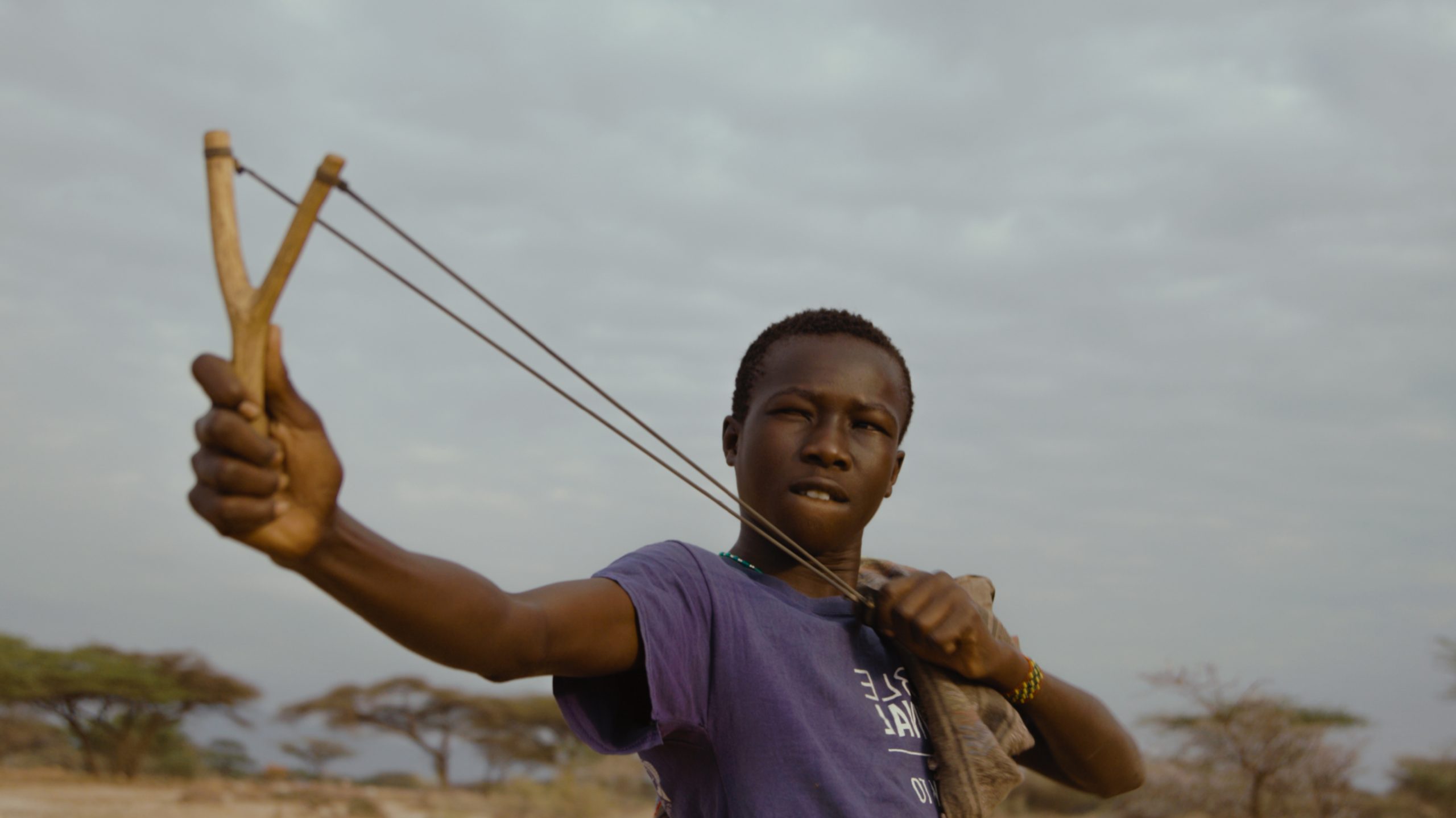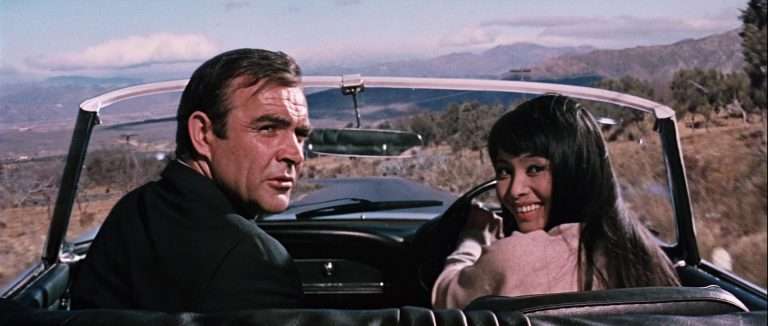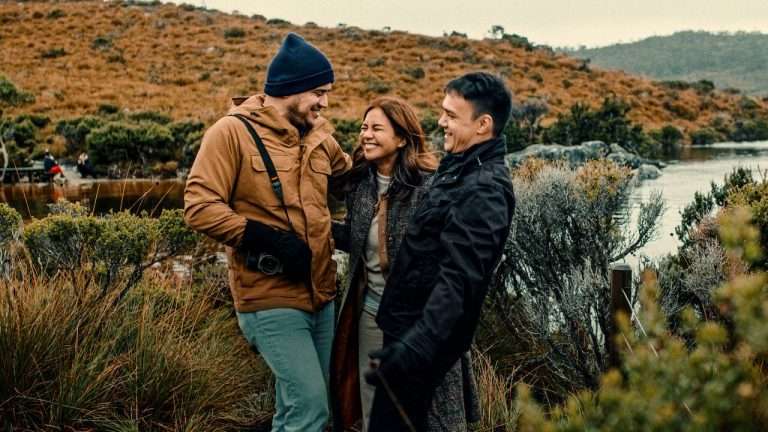“Nature is the only thing worthy of our fear,” the Turkana tribe of northern Kenya firmly asserts early on in Between the Rains. We are dropped into the Ngaremara village, with the directors enacting a process of slowly acquainting us with the Turkana episteme, the way of life they practice and propound, and their elemental philosophies that bind a profound reverence for the environment with their very course of action.
The directors, Moses Thuranira and Andrew H. Brown delineate the vast range and sweep of the landscapes with sustained care and a near-veneration. The Turkanas and the neighboring, rival Samburu clan subsist on their livestock. But precarity is inextricably linked with the existence of the tribes, contingent primarily on the rains, which have become unreliable now more so than ever.
The Turkana elders note that nature was not always so adverse compared to what they are facing presently. The conditions steadily deteriorate yearly, tipping survival circumstances into a boiling point of inter-tribe animosity and strife. Conflicts break out and rage cyclically over access to water and resources. The film puts the four-year prolonged drought of Kenya under the scanner, siding with the Turkanas but also commenting, critically and subtly, on their prescribed codes of living, notions of manhood that must be co-opted to gain warriorhood. The filmmakers are prudent in eliding judgment on the Turkana way of life, which can be called exceedingly harsh and essentializes violence as fundamental to masculinity.

We are guided into the world of the film through the coming-of-age tale of Kole, a teenage Turkana boy. He is continually reminded that shepherding is the only path available to him. We realize he is a misfit in ways more than one, and the film probes his anxieties and encompasses his inner journey to forcefully embrace his Turkana roots and identity. He watches on with great trepidation at risky missions that Turkanas embark on, taking their livestock to graze on Samburu pastures, equally aghast at the constant possibility of armed offensives lobbed between the two tribes.
The fragility he emanates makes one want to reach out and protect Kole from the inexorable coarsening by his clan. He stays detached, choosing to tend to his goats. At the same time, his elder brother, Patrick, rises to the occasion, undergoing various rituals like the Asapan (conducted for the warrior becoming an elder) to perform his community duties. The Turkanas make animal sacrifices to Akuj, their god, the spirit of nature. In the shape and patterns of the animals’ intestines, the shamans read and decipher the fate, predicting and pre-empting enemy attacks.
The tribe’s philosophies regarding their engagement with nature frequently punctuate the film. The elders remark that they can live in peace when nature is content, viz., when it rains; neighbors turn arch enemies when the land dries up. This belief system is interposed with the moral ideology of the Turkanas. They privilege the retaliatory impulse and aggressively rebuff any passivity of the position proposed. “The man who takes no action has no worth here,” Patrick reiterates. They wish for the enemies to strike and grant no room for forgiveness.
Kole flinches at this course of action positioned as inevitable. His brother tells him there is no place for a boy between the rains. His innocence must be shed. Moreover, his induction rites into warriorhood and manhood make for the most harrowing sequence, a series of tightly framed close-ups encapsulating dizzyingly his sense of abasement and feeling of having utterly disappointed everyone around him. It is a shatteringly intimate moment that plunges us right into his mind, riven with frustration and angst, one that cements our association with him.
The film’s tone does border on the edifying, especially when it thrusts into the center the elders’ emphasis on protecting and reinstating their cultural traditionalism and the connections it establishes between community action and nature’s temperament. There is an implication that the wrath of nature can be averted if the tribes stick to their values. However, the stretches of the Turkana peacekeeper negotiating talks to prevent more brutalities could have been done away with, quickly acquiring a pointless repetitiveness. What is most extraordinary about the film is it’s making us sense the sheer life force the tribe exudes, their kinship to the land they inhabit, drawing sustenance and faith from it at an increasingly perilous time, which may end but can never go away entirely, destined to recur only more frequently.
Andrew H. Brown’s camera persistently primes us into engaging with the natural elements; herds of cattle on the move, breathtaking dusks, silhouettes framed against a cozy fire set up in a dark hut, grotesquely butchered animals and birds taking a head-turning flight are recurring features, all placed against jaw-dropping wide long, panoramic and top shots of the African pastoral terrain. When the rains arrive, it’s a thing of spectacle to be witnessed, joy, relief, and the replenished greens captured exquisitely by Brown, an invigorating high point of the film. The parched vistas thrillingly come to life. There is a simplicity to the directors’ touch and in their commitment to the community’s beliefs that carry this powerful film.
Between The Rains screened at the Sheffield DocFest 2023.
Also, Read: Q (2023) ‘Sheffield DocFest’ Review
Director(s): Moses Thuranira Thiane, Andrew H Brown
Country(s): Kenya
Year: 2023
Duration: 82 mins
Executive producer(s): Ngaihike Napuu, Lorot Loter, Lekha Singh
Producer(s): Moses Thuranira Thiane, Samuel Ekomol, Andrew H Brown
Cinematography: Andrew H Brown
Editing: Andrew H Brown, Dedan Wangui, Charity Kuria
Sound: Willie Abuto, Solomon Okoth
Language(s): Swahili
Subtitles: English Subtitles Throughout
Certification: Unclassified 18+




![Little Men [2016]: Kids with Artistic Wisdom](https://79468c92.delivery.rocketcdn.me/wp-content/uploads/2017/07/Little-Men-768x432.jpg)
![Boys State [2020] Review – A Pertinent & Microcosmic Look into the American Political Theatre](https://79468c92.delivery.rocketcdn.me/wp-content/uploads/2021/02/Boys-State-2020-768x512.jpg)
![Writing with Fire [2021] Review: A Well-Told Story of Grassroots-Level Journalism](https://79468c92.delivery.rocketcdn.me/wp-content/uploads/2021/11/writing-with-fire-768x432.jpg)

![The Zim [2017] Short Film Review: Research Inducing But Not Thought Provoking](https://79468c92.delivery.rocketcdn.me/wp-content/uploads/2020/05/The-Zim-highonfilms1.png)